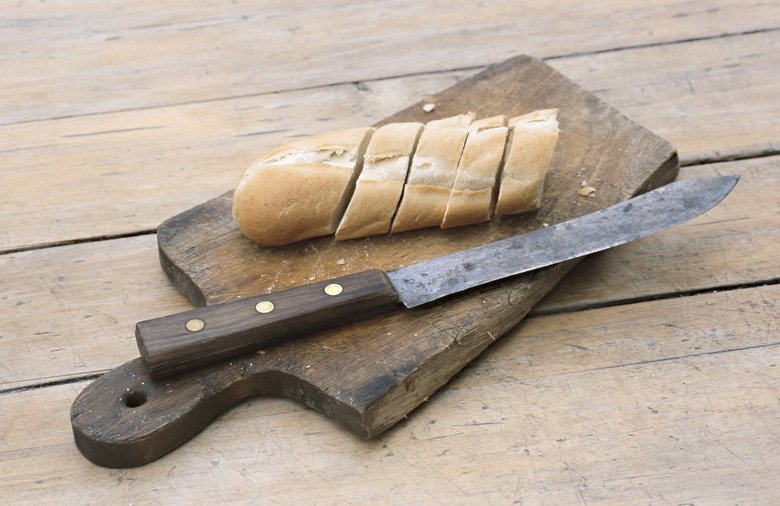What Is Pakkawood?
Pakkawood, also sold as Staminawood, Colorwood, Dymondwood and compreg, is an engineered wood/plastic composite material commonly used in knife handles and other objects that see rough wear. It can closely resemble conventional wood, or come in a range of bright colors. According to Jay Fisher, a professional knifemaker, this phenolic-impregnated wood is currently made primarily by Rutland Plywood Corp. and sold under the Dymondwood trademark.
Composition
Composition
Phenolic-impregnated wood products are a type of plywood. This material is constructed of pieces of hardwood veneer, often dyed bright colors, combined with plastic resins. Dye is impregnated into the wood using a vacuum process, and then the resin is added using a very high pressure environment. The pieces of veneer are stacked and compressed into plywood blocks containing around 29 pieces of wood per inch.
Appearance
Appearance
Composite woods, such as Pakkawood, closely resemble natural wood but often come in a range of colors rarely seen in real wood. The plied wood veneer gives the material the look of genuine wood grain. Pakkawood can be dyed to resemble a range of natural lumber, including oak, chestnut and walnut trees, as well as exotic species such as zebrawood. This material is also available in multicolored styles, including rainbow and camouflage looks, and in bright, solid colors such as fuchsia.
Properties
Properties
Pakkawood produces a very dense product that is largely waterproof, providing much of the same look and feel as wood, but without the warping and splitting common in real wood. This material holds up well in knife and tool handles, especially those exposed to wet and adverse environments. This type wood composite takes an attractive polish, but can be brittle if cut into thin cross-section pieces.
Uses
Uses
According to the manufacturer, composite phenolic-impregnated woods work best in objects meant for constant use under difficult conditions, such as handles for military equipment, knitting needles and pool cues. This material can also be used to make pens and brushes, picture frames, ornamental objects, archery stock and musical instruments.
